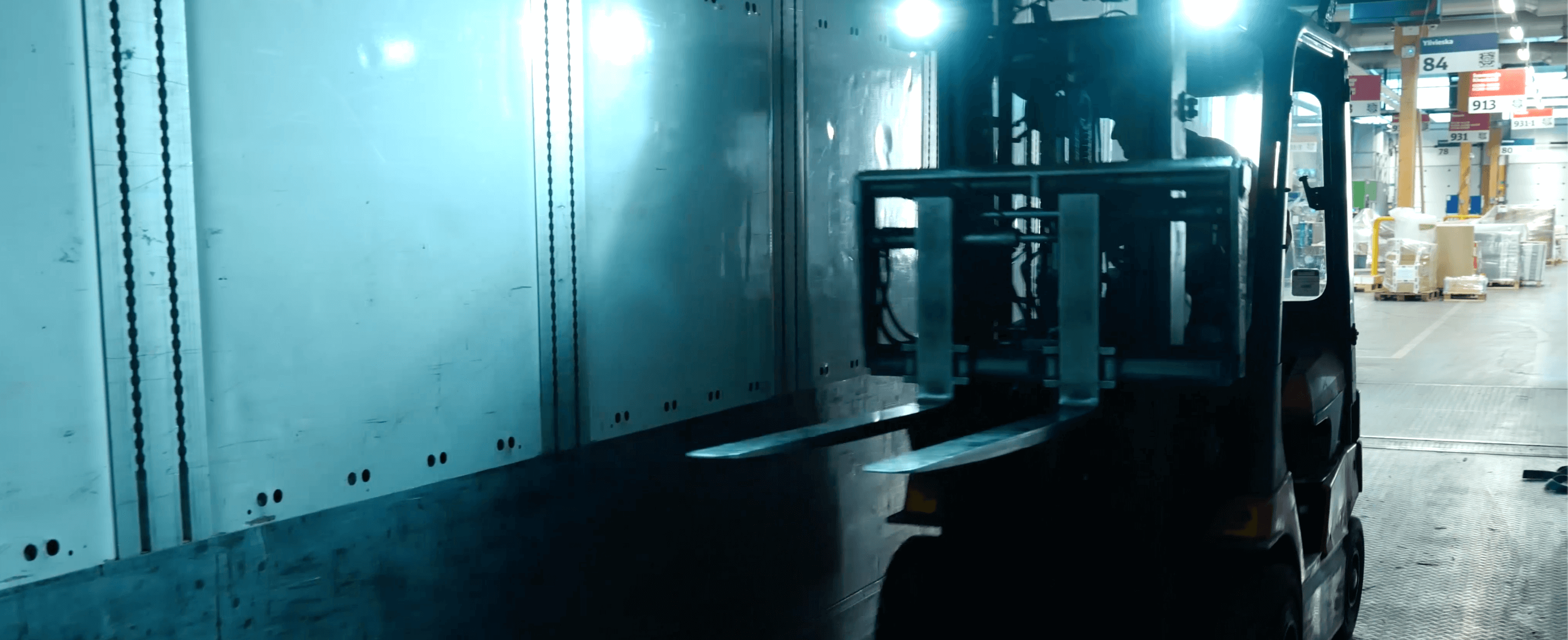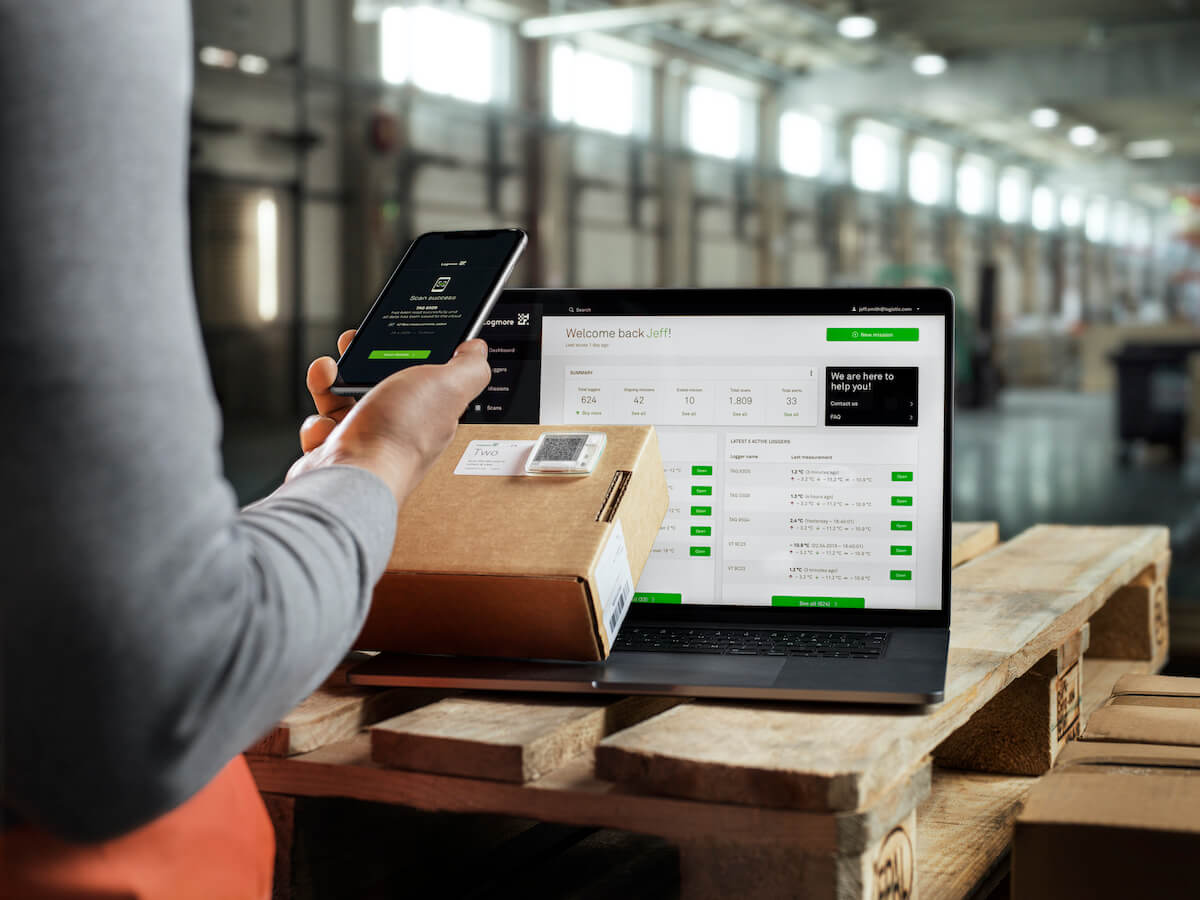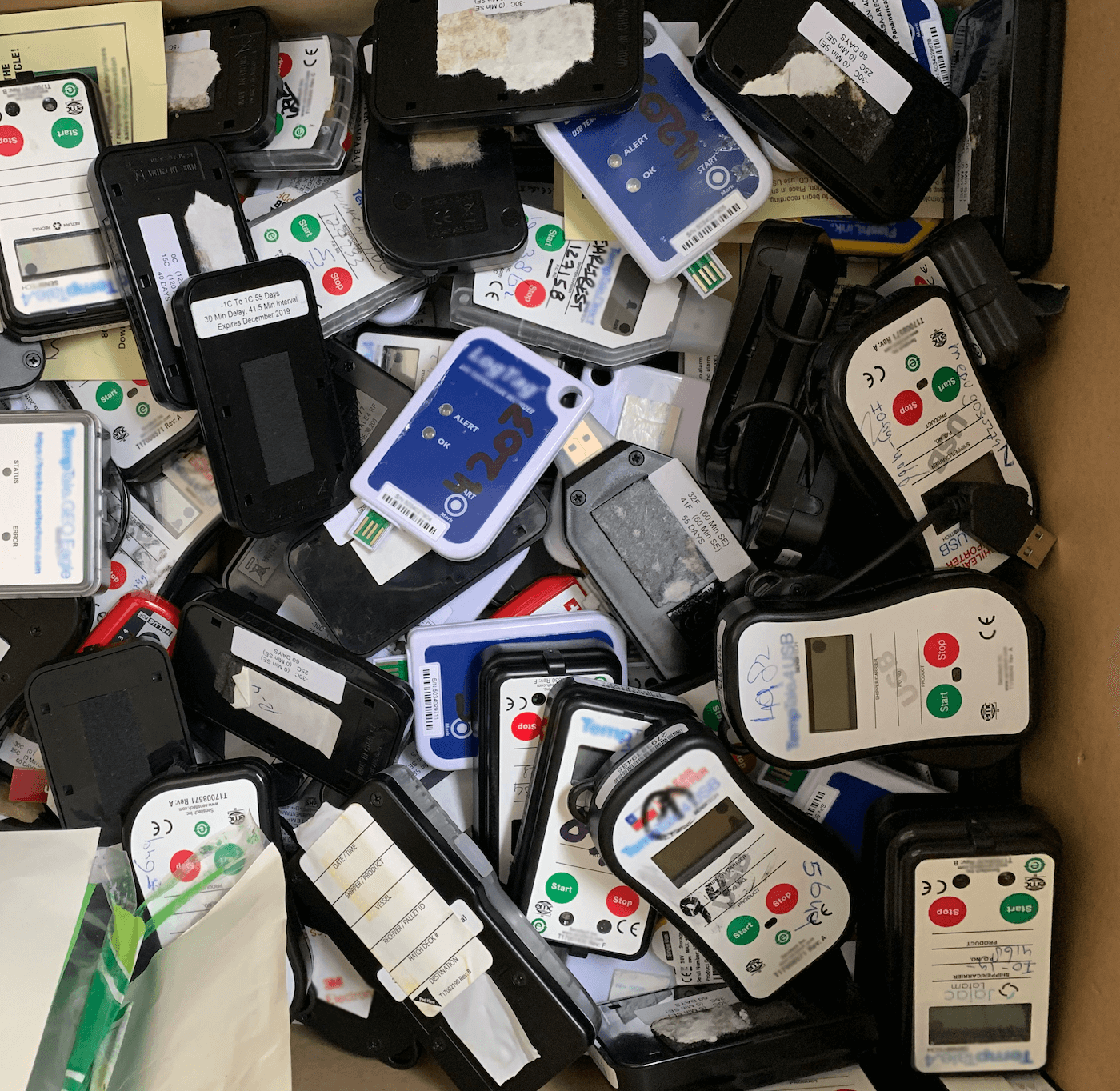Cold Chain Monitoring - The Complete Guide

Temperature-controlled logistics must be agile and resilient to respond nimbly to many crises that can arise, including:
- unexpected delays
- problems in clearing customs
- equipment malfunctions
Temperature-sensitive products like chemicals, meat, plants, drugs and vaccines require temperature-controlled environments from production to consumption and every step in between.
Temperature consistency ensures the quality of these products as they move through their respective supply chains. However, ensuring temperature consistency is challenging.
According to a recent study of the $76 billion global pharmaceutical logistics delivery market, more than 30 percent of deliveries are reaching their destination with some degree of damage or spoilage.
This is unacceptable.
The good news is that monitoring the process to ascertain whether consistent temperatures have been effectively maintained is much easier today due to advancements in the cold chain itself as well evolving technology and tracking capabilities.
What is cold chain monitoring?
A cold chain is a temperature-controlled supply chain established to provide an uninterrupted series of refrigerated production, storage and distribution processes. Equipment and logistics are also critical in maintaining a desired range of low temperatures.
Regardless of the industry, the product, or the structure of the cold chain itself, each hand-off within the supply chain exposes products to potential risk.
Consistent cold chain temperature monitoring and data logging are important to understand whether the product has been compromised as it reaches the consumer.
Workers responsible for managing the cold chain have access to new technology to track temperatures in these controlled environments. With cold chain monitoring devices, workers can keep an eye on temperatures and ensure they remain within predetermined and, in some cases, regulated ranges.
Maintaining consistent temperatures throughout the supply chain
Manufacturing
Beyond simply wanting to provide consumers with the safest product of the highest quality, industries such as food and pharmaceuticals are required to use cold chain monitoring and data logging beginning with manufacturing to comply with federal regulations.
Government agencies audit these industries periodically to ensure compliance and customer safety. Vaccines, for example, are monitored very strictly as even the slightest fluctuation in temperature can render certain vaccines ineffective.
Transportation
As goods are being transported, changes in temperature can occur.
Cold chain monitoring during transport is particularly important and can now be customised according to the product. Data loggers are now disposable, waterproof and pre-calibrated. This allows for increased convenience for cold chain monitoring in a variety of environments, including damp, wet or icy scenarios.
Unlimited amounts of data can be downloaded to a mobile device in CSV or PDF format.
Customs
When managing a global cold supply chain, suppliers of temperature-sensitive products must often clear customs before the shipment can be delivered to the final destination. This adds to the total time of delivery.
Cold chain service providers are skilled in handling customs paperwork in order to expedite processing.
Storage
Both before, during and after transportation, products will be stored for a period of time.
Retail/end-user
Different end-users have different preferences when it comes to receiving deliveries of cold shipments.
Traditional cold chain packaging and transportation solutions have several limitations in terms of cost-efficiency, capability, and capacity. These limitations put a ceiling on your ability to detect and respond to the many vulnerabilities along the cold chain supply route.
To strike the perfect cost balance between functionality and cost effectiveness for your unique product requirements, it is advisable to deploy an effective monitoring and data logging solution.
Critical considerations for effective cold chain monitoring
Transporting cold chain shipments is a delicate balance of maximising safety while minimising cost.
Many organisations are forced to forgo some features of cold chain transport in order to manage costs. It is critical to understand the variety of options and considerations and prioritise which are most critical for your business needs.
1 - Comprehensive temperature data
Proactive is always better than reactive.
Finding out that temperatures were not maintained, when there is nothing you can do about it, is unacceptable.
Seeing temperature excursions in real-time, however, provides the opportunity to take action in cases where direct action is possible. While acting in-transit might is often not possible, those using static cold containers, like kitchen fridges, have a chance to intervene, prevent your products from approaching the point of no return and minimise losses.
Real-time data is available, so accessing it and utilising it is a must.
2 – Real-time data
Temperature isn’t the only data you need in order to ensure your product arrives in optimal condition.
Even if temperature is where it needs to be, what if your cold chain products are sensitive to vibration and the truck’s suspension is shot or the route included an extremely bumpy highway?
Consider products that are typically transported via cold chains:
- fresh produce
- meat products
- pharmaceutical compounds
- delicate vaccine vials
To complete the journey without incident, such products can have unique cold chain requirements including:
- ambient light
- tilt
- shocks
- scan location
- humidity
Monitoring for these and a variety of additional considerations effectively ensures the health of your cold chain.
3 - Monitoring at the package-level
Smaller cold chain products, like single-serve containers of frozen foods or strips of pills, may be packed individually rather than in large aggregated containers. The lower thermal mass of this type of packaging exposes the products to greater temperature excursion risk.
Package-level temperature monitoring is especially important because hotspots can result for individual packages that were:
- last to be loaded to cold rooms located closest to the refrigerator door
- outside cold rooms for longer than the rest of the shipment
- located next to a malfunctioning cooling vent

4 – Connectivity
The typical route along which many cold products travel includes long distances that cross borders and modalities. These aspects, combined with heavily insulated containers, many of which are impervious to radio signals, can easily create connectivity headaches.
Real-time monitoring is possible only when your tracking devices can alert you as soon as an issue arises. This requires that devices remain connected to a network.
Innovative solutions to this problem, however, are becoming available:
- BLE-based or RFID-based solutions can serve as passive loggers.
- Hybrid solutions use mobile phones and other connectivity modalities to broadcast data using the Internet.
5 - Analytics
The goal of cold chain monitoring is to enable intervention as early as possible to salvage your product.
However, the last thing you need is false positives that create chaos. Faulty sensors can result in bad data, misleading reports and poor decision making.
The analytical infrastructure of your cold chain monitoring solutions must be rock solid in order for your teams to trust the data being reported. To ensure the accuracy and functionality of your analytics programs, choose a provider who leverages more than just internal and historical, backward-facing, data.
Machine learning is enabling predictive analytics to provide a more holistic view of the shipment and potential disruptions by incorporating external real-time information including:
- Weather and traffic reports
- News feeds
- ERP data
- Data feeds for the particular train or ship your product is utilising
6 – User-friendliness
Predictive algorithms, data analytics, sensory technology. It all sounds very advanced. And it is.
However, the best cold chain monitoring solutions are not the most complex. The best solutions are those that provide the desired results.
For that to happen, the users must be able to understand the reports being generated and those reports must include actionable insights.
7 – Single-use vs. reusable
To drive return on investment (ROI) when it comes to cold chain monitoring, you’ll recover more of your investment if you can recover and reuse the monitoring device.
To maximize ROI, you’re going to want quality sensors. As previously mentioned, quality monitoring solutions have sensors with these characteristics:
- Real-time reporting
- Reliable connectivity
- Long lasting batteries
Product like these are not designed to be discarded after a single use.
Your cold chain monitoring solution is only as good as the sensory devices they rely upon. Effective reverse logistics is essential to driving ROI.

8 – To outsource or not to outsource
Time is money.
Companies thinking about building their own monitoring platform, no matter how small, should consider a few things before proceeding:
- Typically, any in-house platform design will naturally cause disruptions to the operation and substantial costs with no guaranteed financial reward.
- Skilling up an internal team with the proper training to build such a platform can also mean substantial business risks for your organisation.
When you outsource your cold chain monitoring solution, you leverage the expertise and cost savings of an already streamlined processes. This results in a significant cost savings as planning costs are essentially shared by the providers other clients.
9 – Choosing the right provider
Prior to sitting down with any prospective monitoring providers, it is helpful to do some reflection and goal setting so you know exactly what you are looking to achieve.
Begin by taking a hard look at what you’ve been doing to monitor your cold supply chain.
- Where do you have good data?
- Is it possible that blind spots exist?
- Where might there be opportunities for improvement or updating?
- Are there specific segments that consistently present challenges?
- Talk to the people in your organisation who regularly interact with your cold chain to gather input and feedback.
- If you are handling the supplies for another organisation, inquire about their satisfaction and reconfirm expectations.
Then consider what exactly it is you are hoping to achieve by more effectively monitoring your cold chain. Some examples might be:
- You want to reduce the manual effort of the monitoring process and begin automating.
- You need to prevent temperature fluctuations for a particular product.
- You’d like to leverage the data you are collecting to uncover actionable insights.
With all of this information, you can begin identifying a few options that meet your needs.
- This is another opportunity to involve the people in your organisation who will be utilising the monitoring system most often.
- Ask for references who can address your specific concerns and consider contacting them.
Begin looking at some cold hard numbers to make the right choice. Identify a few key metrics to assess. The metrics will vary from organisation to organisation, but might include:
- Ease of use
- Breadth of analytics capabilities
- % of diminishing excursions
- Efficiency metrics
- Time from setup to seamless operation
Then, if the remaining options are too close to call, consider running a representative pilot to see how effective these systems operate within your organisation’s unique cold chain and with regard to the metrics that are most critical to your business.
10 - Incident response plan
Once you’ve secured the ideal cold chain monitoring and data logging system, you’re still not done.
When something does go wrong, now what?
Having a bullet-proof contingency plan in place will ensure that you can react effectively no matter what goes wrong.
What is the protocol for handling particular situations? Have a plan for every scenario, including:
- A shipment at its destination on the brink of spoilage
- A coolant spill on land and on water
Final thoughts
More data can be overwhelming at first, but with the right monitoring partner, you won’t be alone. When organisations eliminate the hassle of reclamations, disputes and questions about the delivery, both parties benefit.
With Logmore’s clear, fast and secure data logging service, Logmore helps companies reduce the amount of wasted goods by making sure the necessary data is accessible to all relevant parties.
Logmore understands that organisations are eager to improve cold supply chain quality control.
Supported by its own cloud service Logmore Web for data collection and mobile application, Logmore’s cost-efficient QR tags boost business intelligence by monitoring various information about shipments such as temperature and humidity, allowing companies to immediately identify and resolve issues even while these packages are in transit.
To learn more, book a call with our experts or try the demo!







